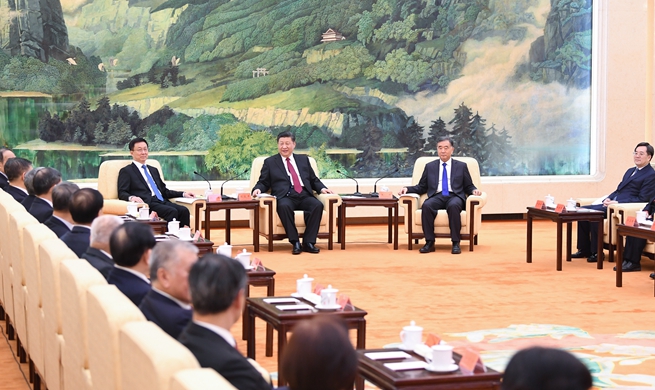by Xinhua writer Hu Tao
BEIJING, Jan. 31 (Xinhua) -- China is becoming a key influencer of the global aviation industry, as well as a key dynamic force in powering global civil aviation growth, said a senior official of the International Air Transport Association (IATA) in Beijing.
"We are optimistic about the future of China's civil aviation growth thanks to the constant efforts in planning, infrastructure construction and fleet and market growth," Alexandre de Juniac, IATA's director general and CEO, told Xinhua in Beijing.
IATA represents some 290 airlines that comprise 82 percent of global air traffic.
FANTASTIC GROWTH
"China has seen fantastic growth in the civil aviation industry," De Juniac said.
Alongside the expanding passenger volume and fleet size, "China has a very strong safety performance. The jet hull loss rate for 100 consecutive months was zero, and China has gained significant progress in on-time flight performance," he said.
By the end of 2018, China's civil aviation has achieved a zero-accident record in over 100 months. And on-time flights in China reached 80.13 percent, said the latest statistics from the Civil Aviation Administration of China (CAAC).
In his opinion, China has set a good example in improving infrastructure to meet the surging demand from air transportation growth.
"China has made significant efforts and seen great progress in improving infrastructure," he said.
By the end of 2018, China had a total of 235 civil transport airports, among which nine were newly built or relocated that year.
The newly-built Beijing Daxing International Airport will start operation by the end of September. "We have cooperated successfully with CAAC to ensure the smooth operation of the new airport," De Juniac said. Beijing Daxing International Airport is located 46 kilometers south of downtown Beijing. It is designed to take pressure off the overcrowded Beijing Capital International Airport in the northeastern suburbs, which handled more than 100 million air passengers in 2018.
"We forecast that the global air passenger volume will double in 18 to 20 years, and infrastructure construction is of critical importance to meet the surging demands," De Juniac said.
OPTIMISTIC EXPECTATIONS
China's civil aviation industry has gained sustainable growth over the past decades. "It has the most member airlines of IATA. And we highly value the market here and keep continue to have close cooperation with government authorities and industry partners," De Juniac said.
China is now the world's second-largest civil aviation market following the United States. Its civil aviation industry handled 610 million passenger trips in 2018, representing an 11.4 percent year-on-year increase, said statistics from the CAAC.
According to IATA's forecast, China will become the world's largest civil aviation market by 2024-2025, and air passenger volume in the Chinese market is expected to reach 1.6 billion by 2037.
De Juniac believes that amid such growth momentum, better management in safety, fleet and human resources is of great importance.
"IATA will work closely with China's civil aviation authorities to provide services and support in fields such as airport slot and airspace management," he said.
IATA is now coordinating closely with CAAC to provide clear and flexible airport slots to all airlines and optimizing the airspace between the two major airports in Beijing.
EASTWARD SHIFT TO ASIA
Air connectivity boosts global prosperity. The global civil aviation market is witnessing an apparent eastward shift to Asia, with China as the most dynamic impetus.
"IATA has made a strategic decision to shift our focus to the surging market here," De Juniac said.
"For the global aviation industry, 2019 will be a good year with profits on the same level of 2018. Risks from multiple aspects are still ahead, while we are still cautiously optimistic of the industry," he added.
Asia-Pacific air carriers, especially some new low-cost carriers, are seeing strong growth which is driven by a combination of continued robust economic growth, improvements in household incomes and favorable population and demographic profiles.
"IATA is building stronger and more professional relationships with government authorities and member airlines," he said, adding that it will continuously improve training services and develop new activities to better serve industry growth.

















